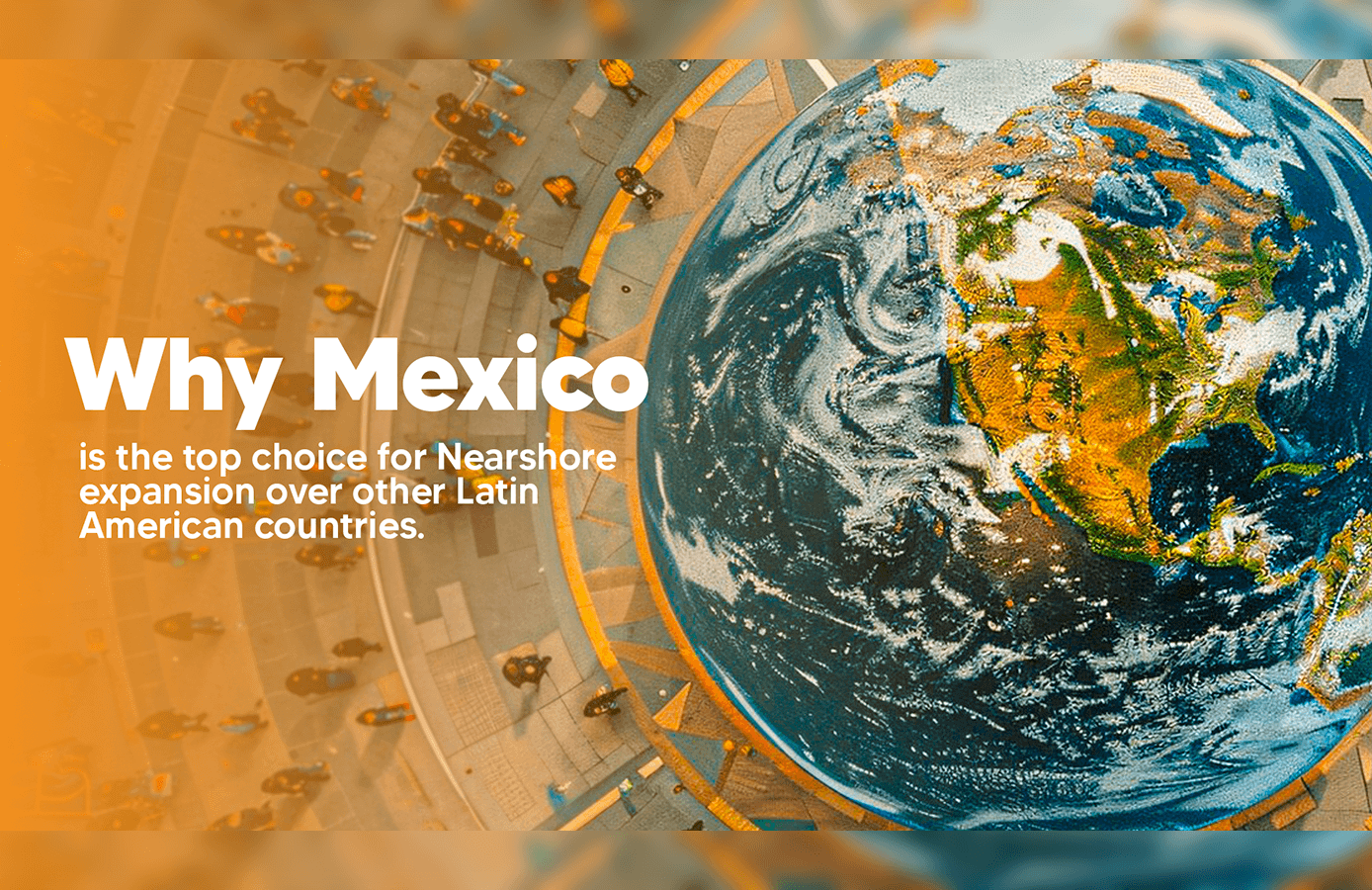Nearshoring operations to Latin America has become increasingly attractive to companies from the U.S., Canada, and other regions, particularly in light of recent global logistical challenges. Among the countries in the region, Mexico stands out as the ideal destination for nearshore operations due to its proximity to the U.S., highly skilled workforce, and robust trade agreements that create a favorable and secure environment for investment. This article delves into the factors that position Mexico as the best nearshoring destination compared to other Latin American nations.
1. Network of Trade Agreements:
Mexico, with its 14 Free Trade Agreements (FTAs), holds a privileged position over other Latin American countries, providing access to more than 50 global markets. Among its most important agreements is the USMCA, which governs over $1.3 trillion in annual trade between the United States, Canada, and Mexico, as well as the EU-Mexico FTA, which represents 22% of the world’s GDP. Compared to Brazil, which has an agreement with only the Mercosur region, or Argentina, which still faces trade restrictions within Mercosur, Mexico offers unparalleled access to key markets worldwide.
2. Economic Environment and Stability:
Mexico’s economic stability is a key advantage. With a nominal GDP of $1.5 trillion (IMF, 2024), Mexico is the second-largest economy in Latin America. Unlike Brazil, which faces high inflation and a complex fiscal system, Mexico provides a more moderate inflation rate and stable monetary policies. In fact, Mexico received over $35 billion in Foreign Direct Investment (FDI) in 2023, making it one of the top 10 global destinations for investment (UNCTAD, 2023). While countries like Colombia and Chile remain attractive, Mexico’s combination of access to global markets and solid economic policies offers greater growth potential.
3. Competitive Labor Costs:
One of Mexico’s biggest advantages over countries like Brazil, Argentina, and Costa Rica is its significantly lower labor costs. The average wage in Mexico is 70-80% lower than that in the U.S. or Western Europe. For example, the average hourly wage for manufacturing in Mexico is about $4.50 USD, compared to $23 USD in the U.S. This cost advantage extends to fields like engineering and technology, where Mexico can offer much lower wages than Brazil, which has higher costs due to inflation and heavy taxation.
4. Comparison with Brazil and Argentina:
When it comes to legal security and regulatory stability, Mexico outperforms Brazil and Argentina. Despite Brazil being the largest economy in Latin America, it has a highly complex tax system that increases operational costs for international companies. In contrast, Mexico offers a more transparent and predictable regulatory environment, which is crucial for investment decisions. Moreover, while Brazil struggles with higher inflation than Mexico, Argentina continues to face significant economic volatility and currency devaluation, adding uncertainty for foreign businesses. Mexico, with its stable economic policies, is a more attractive and reliable option for companies seeking stability in Latin America.
5. Bilingual and Skilled Talent:
Mexico is renowned for providing bilingual talent at a fraction of the cost found in other countries in the region. According to a 2024 CodersLink report, the average salary for IT professionals in Mexico is about $3,165 USD per month, compared to $10,154 USD in the U.S., marking a 67% difference. This talent pool is even more competitive when compared to Costa Rica, which, while also considered a nearshoring destination, has higher operational costs. Additionally, Mexico produces over 130,000 engineers and technicians each year, ensuring a steady supply of highly skilled professionals in key industries such as technology, advanced manufacturing, and aerospace—outpacing countries like Colombia and Argentina, where technical training remains limited.
6. Infrastructure and Operational Costs:
Mexico has heavily invested in modern infrastructure, giving it an edge over countries like Colombia and Chile. In cities like Monterrey and Guadalajara, office rental costs are up to 60% lower than in Silicon Valley or New York (CBRE, 2023). These savings in infrastructure, combined with low operational costs, make Mexico an even more attractive destination compared to European or U.S. operations.
7. Business Climate and Ease of Doing Business:
Mexico consistently ranks high in the ease of doing business index (Doing Business 2023), reflecting its open commercial environment and favorable conditions for investment. Compared to countries like Brazil and Argentina, where bureaucratic hurdles and regulatory barriers can be a challenge, Mexico offers a more streamlined, transparent environment, making it easier for international businesses to expand and operate.
8. Success Stories:
Numerous multinational companies have already proven the advantages of establishing operations in Mexico. For instance, Bombardier Aerospace has reduced its labor costs by 30% by operating in Querétaro, without compromising manufacturing quality. Additionally, companies like Oracle and IBM have chosen Mexico to set up technical support centers, leveraging lower costs and access to a bilingual talent pool. This strategy has allowed them to cut costs by up to 50% compared to operations in India or the elPhilippines.
In conclusion, Mexico not only offers advantages in labor and operational costs but also excels in its stable economic environment, global trade agreements, and highly skilled workforce, making it the premier destination for nearshoring in Latin America. When compared to countries like Brazil, Argentina, Colombia, and Costa Rica, Mexico stands out for its legal stability, global market access, and ability to provide high-quality services at competitive costs.
For companies looking to optimize their operations and tap into key markets like the U.S. and Canada, Mexico is the clear strategic choice in the region.
Ready to Expand Your Business to Mexico?
If you’re a decision-maker looking to explore how Mexico can become your next nearshoring destination, We have the experience and local expertise to help you get started efficiently and cost-effectively. Contact us today to discover how we can support you every step of the way.
Book a free strategy session with our CEO to design your expansion roadmap.
Begin your journey to success in Mexico!
Bibliography:
- United Nations Conference on Trade and Development (UNCTAD). “Trade and Development Report 2023.” UNCTAD Website
- International Monetary Fund (IMF). World Economic Outlook 2024. IMF Website
- CodersLink. “Latin America Tech Talent Report 2024.” CodersLink Report
- World Bank. “Doing Business 2023.” World Bank Doing Business
- CBRE Group. “Global Office Rent Survey 2023.” CBRE Survey
- Mexican Ministry of Economy. “Technical and Vocational Education in Mexico,” 2023. Mexico Ministry of Economy
- Bombardier Aerospace. Annual Report, 2023. Bombardier Aerospace
- IBM. “Global Operations Strategy 2023.” IBM Global Strategy
- Central Bank of Brazil. “Annual Economic Review,” 2023. Central Bank of Brazil




